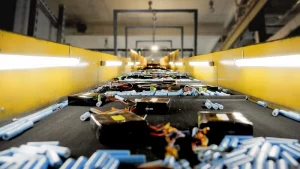Since September, several provinces in China have begun to implement orderly power consumption on a large scale. Why is there such a large area of “power rationing” this year and what measures can be taken to ensure the production?
Firstly, the strong growth of domestic demand.
Since this year, under the influence of rapid economic recovery and surge in factory orders, power demand has increased strongly, resulting in tight power supply, and most enterprises have received orderly power supply requirements from the power supply bureau, bringing several risks to enterprises such as increased costs and order defaults.
Secondly, coal prices rose, and coal imports fell.
The National Bureau of Statistics is stating that prices of the coal processing industry rose by 18.9 percent from August due to strong demand and tight supply. According to the China Electricity Council, in the first half of the year, the cumulative import of coal fell 19.7%. Coal and electricity companies fuel costs rose sharply, resulting in increased losses of coal and electricity companies. Shengang Securities estimated power plant will lose about EUR 0.025/degree if they use coal to generate power.
In addition, the sustained high temperature in some areas this year has led to an increase in electricity load and a significant shortage of power supply. The occurrence of extreme weather such as floods leads to a sudden reduction of wind power and insufficient output of new energy power generation.
Many parties stated that they would take several measures to gradually ease the power shortage.
Equipped with diesel generator
Enterprises equipped with conventional diesel generators is the most direct and effective solution to protect electricity.
Optimize plant internal operations
- The factory should strive to ensure the production tasks of key contracts and valid contracts
- use the time of power restriction to arrange reasonable equipment maintenance
- improve equipment automation, reduce the day shift and increase the night shift. This will increase part of the labor costs and management costs, but at the same time can reduce the impact of power restrictions, while reducing electricity expenses
- optimize the production process and adjust the service time of main high energy consuming equipment to night, which can not only stagger the peak, but also reduce the electricity cost.
Shift from traditional energy to clean energy
Use idle roofs to install photovoltaic power stations. Photovoltaic can produce clean electricity, while adding a supplementary power source for enterprises, which can meet part of their production needs. Photovoltaic installation can also achieve the cooling effect of the plant and reduce the air conditioning load output. On the basis of fully consuming clean energy generation, the emerging loads such as electric vehicle charging and discharging, and electric energy hydrogen production are optimized simultaneously to make the residual power load smoother.
“China will ensure that coal and electricity supplies for the winter season and next spring will be sufficient, while our commitment of peaking carbon emissions by 2030 and achieving carbon neutrality by 2060 will also be realized,” Zhao Chenxin, secretary-general of the National Development and Reform Commission, said at a news conference. [1]
Market-based regulation of electricity consumption
The government should develop market-based regulation of electricity consumption, optimize the tariff formation mechanism, promote flexible tariffs, give full play to their market regulation capabilities, and enhance the market to play a greater role in balancing supply and demand. The National Development and Reform Commission issued a notice saying all power generated from coal should be priced based on the market. Market-based prices can fluctuate within a 20 percent margin in either direction, compared with the current ceiling of 10 to 15 percent. Also, power prices for high energy-consuming industries can break the 20 percent ceiling.
Coal mining companies expand production
Strengthen the coordination of government departments, solve the problem of coal production capacity as soon as possible, tap the potential for increasing production and make every effort to increase production and supply on the premise of ensuring safety.
[1] https://www.chinadaily.com.cn/a/202110/14/WS61676832a310cdd39bc6ebfe.html





